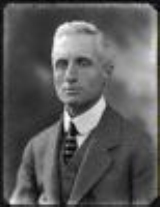
Charles Alfred Bell
Encyclopedia

Winchester College
Winchester College is an independent school for boys in the British public school tradition, situated in Winchester, Hampshire, the former capital of England. It has existed in its present location for over 600 years and claims the longest unbroken history of any school in England...
. After joining the Indian Civil Service, he was appointed Political Officer in Sikkim
Sikkim
Sikkim is a landlocked Indian state nestled in the Himalayan mountains...
in 1908. He soon became very influential in Sikkimese and Bhutanese politics, and in 1910 he met the 13th Dalai Lama, who was forced into temporary exile by the Chinese. He got to know the Dalai Lama quite well during this time, and he was later to write his biography (Portrait of the Dalai Lama, published in 1946). At various times he was the British Political Officer for Bhutan
Bhutan
Bhutan , officially the Kingdom of Bhutan, is a landlocked state in South Asia, located at the eastern end of the Himalayas and bordered to the south, east and west by the Republic of India and to the north by the People's Republic of China...
, Sikkim and Tibet.
After travelling through Tibet
Tibet
Tibet is a plateau region in Asia, north-east of the Himalayas. It is the traditional homeland of the Tibetan people as well as some other ethnic groups such as Monpas, Qiang, and Lhobas, and is now also inhabited by considerable numbers of Han and Hui people...
and visiting Lhasa
Lhasa
Lhasa is the administrative capital of the Tibet Autonomous Region in the People's Republic of China and the second most populous city on the Tibetan Plateau, after Xining. At an altitude of , Lhasa is one of the highest cities in the world...
in 1920, he retired to Oxford
Oxford
The city of Oxford is the county town of Oxfordshire, England. The city, made prominent by its medieval university, has a population of just under 165,000, with 153,900 living within the district boundary. It lies about 50 miles north-west of London. The rivers Cherwell and Thames run through...
, where he wrote his series of books on the history, culture and religion of Tibet. Some of his photographs that he took whilst in Tibet can be found in the Pitt Rivers Museum
Pitt Rivers Museum
The Pitt Rivers Museum is a museum displaying the archaeological and anthropological collections of the University of Oxford in Oxford, England. The museum is located to the east of the Oxford University Museum of Natural History, and can only be accessed through that building.The museum was...
in Oxford. Some of these can be found in a recently published book Tibet: Caught in Time (containing photographs by Charles Bell and John Claude White; Reading: Garnet, 1997).
His English-Tibetan colloquial dictionary was first published together with a grammar of colloquial Tibetan as Manual of Colloquial Tibetan in 1905.
Charles Alfred Bell died in Canada in 1945.
Works
- Manual of Colloquial Tibetan. Calcutta: Baptist Mission Press, 1905. (Part II, English-Tibetan vocabulary; later editions 1919 and 1939)
- Portrait of a Dalai Lama: the Life and Times of the Great Thirteenth by Charles Alfred Bell, Sir Charles Bell, Publisher: Wisdom Publications (MA), January 1987, ISBN 9780861710553 (first published as Portrait of the Dalai Lama: London: Collins, 1946).
- Tibet: Past and Present. Oxford: Clarendon Press, 1924
- The People of Tibet. Oxford: Clarendon Press, 1928
- The Religion of Tibet. Oxford: Clarendon Press, 1931
External links
- the Tibet Album, British photography in Central Tibet 1920 - 1950
- List of illustrations from 'The People of Tibet', Sir Charles Bell, Oxford: Clarendon Press, 1928
- Photo
Referenced to by Peter Fleming in the introduction to the book "Seven Years In Tibet" by Heinrich Harrer,Flamingo imprint 1997 in connection to his surprisingly close relationship to the 13th Dalai Lama as a foreigner}

